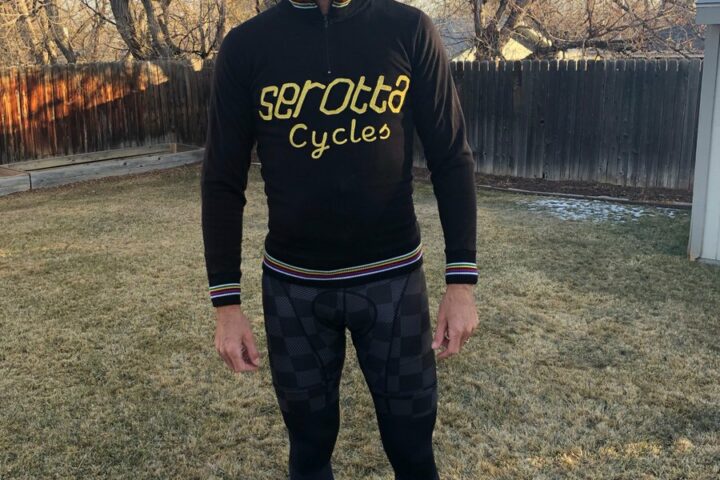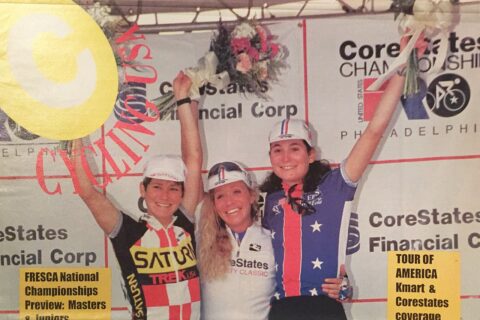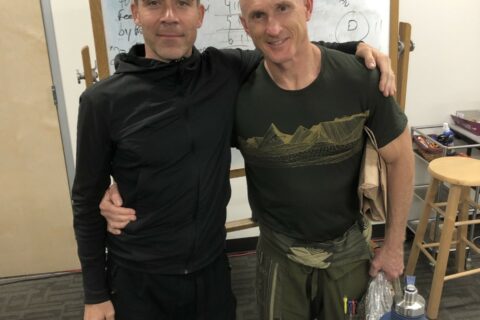The topic of formulas and their inherent value has been mentioned previously on Cycling in Alignment. This short bonus episode is meant to clarify that formulas are a useful starting point in cycling and training. Formulas can help you race a faster time trial, to gauge how many bottles per hour you need to consume during a long ride in the mountains, how many intervals to run at what pace for a given result, and how long a break should be taken in between.
However, formulas can have flaws or limitations. The critical piece is to make allowances for alterations and compensations. We, as coaches, are trying to help the athlete refine their instinct. Formulas are a tool in a tool chest, which athletes and coaches can use as a starting point. However, formulas don’t account for varying road surfaces, grades, weather, even the unpredictable nature of each individual’s biome.
There are so many opportunities for an athlete to be led astray by strictly adhering, religiously, to a formula. A formula is a proxy for experience. As always, the goal of this show is to help guide you towards the alignment of scientific athletic pursuit with the right relationship of mind and body.
Episode Transcript
Colby Pearce
Greetings and salutations cycle knots. Welcome to a short episode of cycling and alignment. Today’s just a bit of me talking. This is version 2.0. I recorded this once already and it was terrible. So I just had to do it again. So version 2.0 discussing metrics and formulas. First disclaimer is that one thing I’m realizing when I’m recording all these podcasts is I’m not Keanu Reeves man. I’m not a person who wants to be in the spotlight. I’m sure you all knew I’m not Keanu Reeves, maybe some of you were a bit confused on the concept, but I’m glad to have cleared it up. This is just me getting the neural connections that run through my skull out into the universe. And my aim is that when that happens, people will find it helpful. So far, the feedbacks been largely quite positive. So here we go. I had a conversation with one of my athletes the other day, and he helped illuminate a problem, a discussion from another angle helped me see things from another side, I’d like to see problems from all sides. That’s ultimately ultimately one of my goals is to understand things from all phases, all phases of the dodecahedron all layers of the mandola. When you see something from all these angles, you can truly discuss it and teach it and understand it. So in previous discussions, specifically I have perhaps bashed formulas or formulaic thinking to a degree. And in particular on the episode Dr. Lim I brought this up and I’ve done this in many conversations with my athletes. And it has come to my attention that there are a few things I overlooked in this equation. One is that because of my disdain for formulaic thinking, I may have perhaps been a bit emotional or over, reacted over compensated. talk too much about how much I don’t like formulas, and I want to make it clear that of course, formulas. And I’ll get to what I mean by that exactly in a moment. formulas are useful. They do have utility and support for in particular the beginning athlete and I don’t necessarily mean chronologically young athlete, but the athlete who has only cycled for a few years, or any endurance, partaking in any endurance sport for a brief period of time. That’s one positive we can take away from formulas. Where I think I get myself potentially in trouble a bit is, I’ve been in the sport for 30 years. And there are times when I think about things. Well, like anyone who’s done an activity for over three decades, the problems you grapple with in your head and the dodecahedron is somewhat advanced. And what that means is when I discuss the challenges of problematic thinking, I may be so far removed from or abstracted from the original concept that at times, I think that the learning athlete or the younger athlete may not get my message or may not get anything useful. And that’s not my goal. So I want to be clear on how I describe formulas use in cycling and where I think they’re applicable and what the limits are. So I do have a disdain for formulaic thinking, what are we talking about when we mean formulate thinking what am I? What am I talking about peers talking about things like how many grams of carbs should I eat per hour on a training ride? Or how many grams of carbs should I have during a race and these are based on this formula. This is you know, an equation based on your body weight and how many kgs you’re making at a certain rate of work. And it’s all averages and i i don’t like averages, they drive me nuts. This is I could never ever ever be an accountant because there are too many averages in accounting. And then the precision seems to not matter at the wrong moment. Anyway, I’ll stop talking about that. But it’s the same thing with the number of bottles per hour. Same problem really To be honest, a power prescription for a time trial. I mean, there is utility in that to a degree but man in in the US. In North America, we well, we don’t really have time Charles anymore, but we used to have flat 40 Ks with a cone. After 20 K, that’s a time trial where you can apply a formula. But even to that, you have to make disclaimers. Which direction is the headwind? Which direction is the tailwind? What’s the payment? Like? What’s the grade like? You have to make compensations for these things? And of course, we can get quite detailed in our formulas and that can work around some of those problems. But ultimately, what are we trying to do? We’re trying to help the athlete refine their instinct in their intuition. This is the problem with formulas. So what are the limits of a formulaic approach to any of these problems? One is the stochastic nature of racing itself. If I tell you to eat a certain number of grams of carbs per hour, it doesn’t account for weather, you know, including temperature barometric pressure, humidity wind, it doesn’t account for the hive like behavior of the peloton. It doesn’t account for road surfaces or grades. It doesn’t account for crashes, all these things that it also doesn’t account for these stochastic or As of yet unquantifiable nature of the human biome, meaning if I give two athletes were identical weights, the same prescription, which according to many formulas would work for the number of grams of carbs per hour they should take in. Well, different athletes have different biomes and different biomes have different glycemic responses to the same ingredients. You can give one person a white potato and watch their blood sugar skyrocket, you give another person a white potato and get quite the opposite effect. Why? Because they have different critters in their guts. And I hate to break it to you, but you are more critters than human. So this when I know this type of these types of facts about the human body formula just drives me nuts because it’s just there’s so many opportunities for an athlete to be led astray. The same thing applies to a power prescription for an interval workout, for example. And I’ll point out that just because someone’s supposed to do intervals at 360 to 370 He wants on a given day for a given duration. And they can’t meet that goal Well, when they become derailed because that goal is a bottom line that they can no longer pass and they feel as though they failed. I think that can be a wasted opportunity. Yes, there are days where the athletes just trashed on, they should go home and not try to do intervals. There are also days where maybe 340 was what they had in the day in the tank, and that was a very valuable day of work. So formulas can be problematic for all these reasons. There are lots of limits to them. What’s the point of a formula? a formula is a proxy for experience. That’s what it is. So when an athlete doesn’t have a lot of experience, a formula can have a lot of utility. Right? When someone’s been racing for two years, and they’re doing their first hundred mile road race, having an idea of how many bottles per hour they should drink is probably a good starting point. But that’s exactly what it is a starting point. So what are we trying to To experience we’re trying to experience the highest level of sport as athletes and we’re trying to coach our athletes to achieve the highest level of sport, in cycling or whatever your chosen discipline is. And my definition of the goal of sport is the alignment of mind, body and passion with intent. You could have Mind, body or passion on their own. Without intent, they don’t really go anywhere. When our formulas useful. formulas are useful as a teaching device for beginning writers. They’re a good platform to learn from, but they’re just that a loose skeleton that we should use to interpret our responses and evolve our instinct. formulas can also be useful at times of extreme duress. So as race intensity or training intensity increases and we approach threshold or functional threshold power, the nervous And we’ll begin to feel more and more of a mounting level of stress, more and more threat, and probably a shift from parasympathetic to sympathetic. When this happens, people’s ability to do things like navigate technical terrain, or make conscious decisions or pay attention to how much they’ve been drinking, those abilities get worse they go down. So part of the practice of sport is learning to have a higher level of effort and still be able to do things like read the tactics of a bike race or handle your bike really well. This is we call this the spin nice concept, right? Any world level cyclocross racer, can go extremely deep on the bike and still maintain technical skill they can still get the bikes over bears cleanly they can navigate, muddy and slick terrain, all while pinned. Why watch category for racers learning how to do cyclocross, and you’ll see a smorgasbord of technical errors crashing in corners, poor line choices, poor by clean angles, poor technique over barriers, etc. This is the athlete learning how to navigate the effort level of the race with the technical abilities. It’s like a teeter totter at the beginning, you push hard on one side and the other side gets worse. Right? And then you push hard on the technical side and you can’t go as fast. So, super nice and other world level. cyclocross racers, or anyone who who raises at a high level has technical mastery at a high output level. So until you hit that point, formulas can be very instructive. When an athlete reaches a very high level of expertise, and technical ability, the formula becomes no longer necessary, but it’s not because the formula has been discarded by the racer. It’s not because the racer has moved beyond them. It’s because the racer has refined their own internal tech ometer their own instinct of how much to eat and drink, how to observe the race and watch tactics while they’re going hard. So the formula becomes too basic in a sense, it doesn’t mean they don’t, it’s not contained within their knowledge base. It doesn’t mean it’s not relied upon at moments, but most of the time, it’s no longer needed to be accessed because it’s something they’ve learned from and moved beyond some of the problems on overreliance with formulas. For one, a formula is by definition, very broad and generalized. Anytime you make a recommendation of the type that I’m speaking about, you’re trying to apply it to a large number of riders or racers. And this means that inherently it’s going to not necessarily apply to you this is a beach house problem? nobody really wants a beach house. But a lot of new houses are painted beige, because it’s a non objectionable color. No one ever says, Oh, honey, I’m gonna go buy a house. What’s your favorite color, dear? I was really thinking of a nice page. I’m sure of course, there’s someone out there who actually does think that not bashing you. beige is your thing. Knock yourself out. I’m just saying. As a metaphor, nobody really likes a beach house. Build an average house for an average man and woman and you built a house for no one because no one’s average. No man or woman or average everyone’s unique. Another problem with overlying some formulas is that they encourage the athlete to step away from connection with the body. And that’s contrary to the basic goal of sport, which is alignment of mind body and passion. With intent. Sport practice properly leads us to an increased connection with the body and increase connection to deeper understanding of the self. Right. Another limitation or problem With over reliance on formulas is that a formula ultimately enables the athlete to avoid taking responsibility for the decision of their actions. This can be the case when an athlete wants to hand off a decision to the coach. I’m doing my long time trial, and I don’t know how much I should drink or my hundred mile mountain bike race, how many bottles do I have? And sometimes this is an intellectual bypass for the athlete, maybe they don’t have confidence in their decision. So they don’t want to take on the responsibility of failure. They already perhaps the athlete already feels as though they have a lot of weight on their shoulders about the performance of this event. And this is quite normal and competition. This is a normal mindset for competitive athletes. And I understand that, obviously, I’ve been an athlete for years. But what I’m saying is, there are times when an athlete wants to hand off the decision to the coach. Because they don’t want to deal with a consequence of that. And that’s not really the role of a coach or a sports scientist, the role of a sport scientist or the coach is to educate and inform the athlete so they can step up and learn how to make these Choices, choices on their own. This is what meaningful, powerful growth is as an evolution on the path of the athlete, this is the goal for me as a coach is to teach my athletes how to fish in a sense, right? Nothing is more satisfying. So many times I see adults living life and they perhaps don’t want to fully take responsibility for the decisions of that they make or the actions in their life. And so as a coach, I encourage you to critically think at the way you interact with your athletes. Are you taking on too many decisions for your writer? are you treating them like a child? That’s not necessarily in the job description. At least for me, it’s not. I drew a picture for this mini episode it’s a triangle. And at one point, we have p which is for power. And another point we have HR, which is for heart rate, and on the third point, we have Rp. I drew it with a sharpie, and a piece of printer paper because this is high tech. We do things right here. And in the center of this triangle is a question mark. What I’d like you to consider is that, at times athletes become I think confused. Many athletes especially in 2020, are under the impression that power is at goal. Power is not a goal, powers and expensive measuring tape. That’s what it is. And We use these metrics if we’re using them correctly as athletes to figure out what’s happening. When we look at power, and we see the output, and we ask ourselves, How hard is it for me to make that 200 300 400 watts. And when we also look at heart rate, which is our response to that load in the center of those three metrics is what’s actually happening in my body. What is going on? How, how am I handling this load? How am I responding to this load? How does this load feel? The metrics aren’t the goal. The metrics are not the end point of training or racing. And when someone finishes a race, I don’t ask them what their average power was. I asked them what their place was. Of course, in a time trial, or perhaps a hillclimb average powers can be neat, and sometimes riders set prs, but in most races, actually, arguably, lower powder power is almost always the goal. That’s a very I’ll say culturally on American perspective as American riders and this is something I think I can speak on. With a little bit of authority having raced internationally, in so many different formats. Americans tend to wear a chip on their shoulder about how tough they are and about how strong they are in a bike race. And I can tell you guys, if you think that way about bike racing, that Europeans are just licking their chops waiting to take advantage of you. Because bike racing in Europe is more of a chess match. And a European rider does not see it as dishonorable or duplicitous at all if they outfox you to the line even though you are stronger than they are. And that is not necessarily an American way of thinking. took me a long time to figure this out. And even a longer time to put it sometimes into practice. And arguably I did at times and many other times I did it. So food for thought. I hope you find that Little bit illuminating. And your mental neurons have been excited by my ramblings on metrics and how they might be useful to you. Big Picture, too long didn’t read. Don’t get fooled by the metrics don’t get fooled by formulas. They’re useful and they have utility as a teaching tool. But the real goal is to develop your instinct. The real goal of sport is to align your own intent with your mind and body and passion so that you can actually express flow on the bike. Wishing you peace and kittens or puppies, depending on which seems to be divisive. Cats thanks for listening. Peace out. Thank you for listening to the cycling and alignment podcast. I hope you enjoy today’s show. If you have some feedback about the show, you can email me at cycling in alignment at Fast Talk Labs.com. That’s all just like it sounds cycling in alignment at Fast Talk Labs comm We will also put the link to this email in the show notes and some links to some socials in case you want to hit us up there. We appreciate your positive feedback if you liked the show, if you didn’t like it, well, that’s okay. And let me know about that too. The thoughts and opinions expressed on this podcast are those of the guests. For me. They do not represent bass labs, bass talk, Chris case, Trevor Connor, Santa Claus or anyone else. Thanks. Have a good day.




